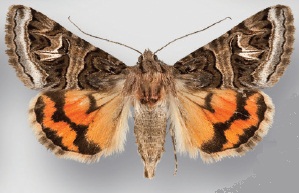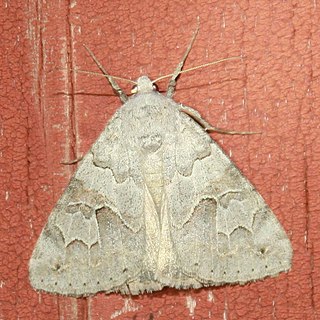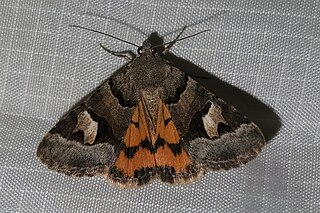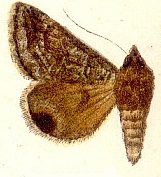
Drasteria is a genus of moths in the family Erebidae.
Drasteria yerburyi is a moth of the family Erebidae. It is found in Somalia, Eritrea, the United Arab Emirates, Yemen and Iran.

Drasteria philippina is a moth of the family Erebidae. It is found on the Canary Islands, as well as in Morocco, Algeria, Libya, Egypt, Israel and Malta.
Drasteria antiqua is a moth of the family Erebidae. It is found in Kyrghyzstan and Mongolia.
Drasteria catocalis is a moth of the family Erebidae. It is found in Kyrghyzstan, Kazakhstan, Tajikistan, China, Uzbekistan and Russia.
Drasteria chinensis is a moth of the family Erebidae. It is found in Kyrgyzstan, Kazakhstan, Mongolia and China (Gansu).
Drasteria coenobita is a moth of the family Erebidae. It is found in Libya.
Drasteria hyblaeoides is a moth of the family Erebidae. It is found in Kyrghyzstan, Tajikistan and China.
Drasteria mongoliensis is a moth of the family Erebidae found mostly in Russia (Siberia) and Mongolia.

Drasteria pulverosa is a moth of the family Erebidae. It is found in Russia and Mongolia.
Drasteria obscurata is a moth of the family Erebidae. It is found in Iran, Afghanistan, Kazakhstan, Kyrgyzstan, Uzbekistan and Tajikistan.
Drasteria occulta, the occult drasteria moth, is a moth of the family Erebidae. The species was first described by Henry Edwards in 1881. It is found in North America, where it has been recorded from coastal areas in Maine, New Jersey, Pennsylvania and Texas. It is listed as a species of special concern and believed extirpated in the US state of Connecticut.

Drasteria picta is a moth of the family Erebidae first described by Hugo Theodor Christoph in 1877. It is found in Ukraine, Russia, Kazakhstan, southern Turkey, Syria, Armenia, Daghestan, Kyrgyzstan, Uzbekistan, Turkmenistan, Mongolia and China.
Drasteria saisani is a moth of the family Erebidae. It is found in Crimea and in southern Russia, Armenia, Kazakhstan, Uzbekistan, Kyrgyzstan, Tajikistan, Turkmenistan, Daghestan, Turkey, Iran, Afghanistan, Pakistan and China.
Drasteria scolopax is a moth of the family Erebidae. It is found in China and Russia (Siberia).

Drasteria scrupulosa is a moth of the family Erebidae. It is found in North America, where it has been recorded from California, Idaho, Nevada, Oregon and Utah. The habitat consists of open sagebrush steppes.
Drasteria sculpta is a moth of the family Erebidae. It is found in Kyrgyzstan and Kazakhstan.
Drasteria sinuosa is a moth of the family Erebidae. It is found in Turkey, Iran, Kazakhstan, Tajikistan, Uzbekistan, Afghanistan and Turkmenistan.

Drasteria stretchii is a species of moth in the family Erebidae. It is found in North America, where it has been recorded from northern Nevada., California, Oregon, Wyoming and Washington. The habitat consists of dry, rocky canyons at low to middle elevations.

Drasteria tenera is a moth of the family Erebidae. It is found in Russia, Kazakhstan, Kyrgyzstan and China (Tibet).







